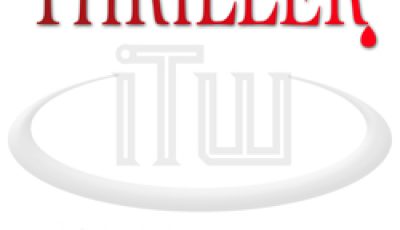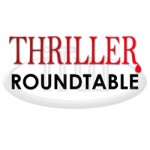

July 22 – 28: “Must new technologies contribute to the plot?”
 New technologies are often introduced in thrillers. This week ITW Members Boyd Morrison, Jeff Carlson and D. J. Niko will contribute to another can’t miss discussion while they answer the question: “Must new technologies contribute to the plot?”
New technologies are often introduced in thrillers. This week ITW Members Boyd Morrison, Jeff Carlson and D. J. Niko will contribute to another can’t miss discussion while they answer the question: “Must new technologies contribute to the plot?”
~~~~~
 Boyd Morrison is a Seattle-based author, actor, engineer, and Jeopardy! champion. He started his career at Johnson Space Center, where he flew on NASA’s Vomit Comet, the plane used to train astronauts for zero gravity. He went on to earn a PhD from Virginia Tech, develop thirteen patents at RCA, and manage a video game testing group at Microsoft before becoming a full-time writer. His debut thriller, THE ARK, became an international bestseller and has been translated into twenty-one languages. His other thrillers include THE LOCH NESS LEGACY, THE ROSWELL CONSPIRACY, THE CATALYST, THE VAULT, and ROGUE WAVE.
Boyd Morrison is a Seattle-based author, actor, engineer, and Jeopardy! champion. He started his career at Johnson Space Center, where he flew on NASA’s Vomit Comet, the plane used to train astronauts for zero gravity. He went on to earn a PhD from Virginia Tech, develop thirteen patents at RCA, and manage a video game testing group at Microsoft before becoming a full-time writer. His debut thriller, THE ARK, became an international bestseller and has been translated into twenty-one languages. His other thrillers include THE LOCH NESS LEGACY, THE ROSWELL CONSPIRACY, THE CATALYST, THE VAULT, and ROGUE WAVE.
 D.J. Niko is the author of The Sarah Weston Chronicles series of archaeological thrillers. Her debut novel, THE TENTH SAINT, won the Gold Medal in popular fiction in the juried Florida Book Awards. A career journalist and editor who has traveled the globe, Niko writes about the world’s remote places and cultures with the authenticity that can only come from firsthand experience. She is a native of Athens, Greece, and now resides in Florida with her family.
D.J. Niko is the author of The Sarah Weston Chronicles series of archaeological thrillers. Her debut novel, THE TENTH SAINT, won the Gold Medal in popular fiction in the juried Florida Book Awards. A career journalist and editor who has traveled the globe, Niko writes about the world’s remote places and cultures with the authenticity that can only come from firsthand experience. She is a native of Athens, Greece, and now resides in Florida with her family.
 Jeff Carlson is the international bestselling author of PLAGUE YEAR and THE FROZEN SKY. To date, his work has been translated into fifteen languages worldwide. Readers can find free fiction, videos, contests and more on his website.
Jeff Carlson is the international bestselling author of PLAGUE YEAR and THE FROZEN SKY. To date, his work has been translated into fifteen languages worldwide. Readers can find free fiction, videos, contests and more on his website.
- LAST GIRL MISSING with K.L. Murphy - July 25, 2024
- CHILD OF DUST with Yigal Zur - July 25, 2024
- THE RAVENWOOD CONSPIRACY with Michael Siverling - July 19, 2024
